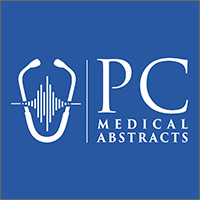User login
The video associated with this article is no longer available on this site. Please view all of our videos on the MDedge YouTube channel
Martinez, K.A., et al, Am J Prev Med 53(4):533, October 2017
The authors, from the Cleveland Clinic, explore the reasons for divergent responses to recent guideline recommendations against screening for breast cancer and prostate cancer. Both cancers are common (lifetime incidence of 12% and 16%, respectively), with indolent forms that are more prevalent with age. Screening with mammography and prostate-specific antigen (PSA) testing achieves earlier detection and relative risk reductions in cancer-specific mortality of 15% to 20%, but negligible effects on overall mortality and a risk of overtreatment that is estimated to be 30% to 80%. Benefits of screening and risks of overtreatment are unclear because of study limitations and evolution in diagnostic criteria, screening and management. Beginning in 2008, the US Preventive Services Task Force downgraded its recommendations for routine mammography (e.g., a rating of C for average-risk women aged 40-49) and for routine PSA testing (rating of D regardless of age). [EDITOR’S NOTE: USPSTF PSA screening recommendations have changed. See “USPSTF advises against widespread prostate cancer screening.”] While objections to the PSA rating were minimal, the public and professional backlash about mammography was profound. Reasons may include unique characteristics of breast (versus prostate) cancer, including mortality at a younger age, financial conflicts of interest (with mammography generating $8 billion per year in the US), bureaucratic incentives (e.g., quality measures, insurance reimbursement), and the influence of profit-generating advocacy groups. Many physicians do not understand the risks and harms of overtreatment or the inability of early detection to prevent metastasis, and patients want to be “better safe than sorry.” Rates of screening mammography may not decrease until truly informed decisions are possible, which will necessitate better algorithms to predict those cancers that are likely to spread. 20 references ([email protected] – no reprints)
The video associated with this article is no longer available on this site. Please view all of our videos on the MDedge YouTube channel
Martinez, K.A., et al, Am J Prev Med 53(4):533, October 2017
The authors, from the Cleveland Clinic, explore the reasons for divergent responses to recent guideline recommendations against screening for breast cancer and prostate cancer. Both cancers are common (lifetime incidence of 12% and 16%, respectively), with indolent forms that are more prevalent with age. Screening with mammography and prostate-specific antigen (PSA) testing achieves earlier detection and relative risk reductions in cancer-specific mortality of 15% to 20%, but negligible effects on overall mortality and a risk of overtreatment that is estimated to be 30% to 80%. Benefits of screening and risks of overtreatment are unclear because of study limitations and evolution in diagnostic criteria, screening and management. Beginning in 2008, the US Preventive Services Task Force downgraded its recommendations for routine mammography (e.g., a rating of C for average-risk women aged 40-49) and for routine PSA testing (rating of D regardless of age). [EDITOR’S NOTE: USPSTF PSA screening recommendations have changed. See “USPSTF advises against widespread prostate cancer screening.”] While objections to the PSA rating were minimal, the public and professional backlash about mammography was profound. Reasons may include unique characteristics of breast (versus prostate) cancer, including mortality at a younger age, financial conflicts of interest (with mammography generating $8 billion per year in the US), bureaucratic incentives (e.g., quality measures, insurance reimbursement), and the influence of profit-generating advocacy groups. Many physicians do not understand the risks and harms of overtreatment or the inability of early detection to prevent metastasis, and patients want to be “better safe than sorry.” Rates of screening mammography may not decrease until truly informed decisions are possible, which will necessitate better algorithms to predict those cancers that are likely to spread. 20 references ([email protected] – no reprints)
The video associated with this article is no longer available on this site. Please view all of our videos on the MDedge YouTube channel
Martinez, K.A., et al, Am J Prev Med 53(4):533, October 2017
The authors, from the Cleveland Clinic, explore the reasons for divergent responses to recent guideline recommendations against screening for breast cancer and prostate cancer. Both cancers are common (lifetime incidence of 12% and 16%, respectively), with indolent forms that are more prevalent with age. Screening with mammography and prostate-specific antigen (PSA) testing achieves earlier detection and relative risk reductions in cancer-specific mortality of 15% to 20%, but negligible effects on overall mortality and a risk of overtreatment that is estimated to be 30% to 80%. Benefits of screening and risks of overtreatment are unclear because of study limitations and evolution in diagnostic criteria, screening and management. Beginning in 2008, the US Preventive Services Task Force downgraded its recommendations for routine mammography (e.g., a rating of C for average-risk women aged 40-49) and for routine PSA testing (rating of D regardless of age). [EDITOR’S NOTE: USPSTF PSA screening recommendations have changed. See “USPSTF advises against widespread prostate cancer screening.”] While objections to the PSA rating were minimal, the public and professional backlash about mammography was profound. Reasons may include unique characteristics of breast (versus prostate) cancer, including mortality at a younger age, financial conflicts of interest (with mammography generating $8 billion per year in the US), bureaucratic incentives (e.g., quality measures, insurance reimbursement), and the influence of profit-generating advocacy groups. Many physicians do not understand the risks and harms of overtreatment or the inability of early detection to prevent metastasis, and patients want to be “better safe than sorry.” Rates of screening mammography may not decrease until truly informed decisions are possible, which will necessitate better algorithms to predict those cancers that are likely to spread. 20 references ([email protected] – no reprints)
Learn more about the Primary Care Medical Abstracts and podcasts, for which you can earn up to 9 CME credits per month.
Copyright © The Center for Medical Education
